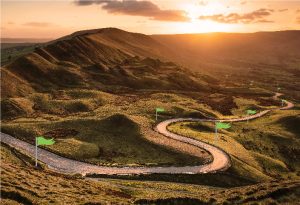by Robert Pittman, Janus Institute
I often ask local elected officials if they have ever participated in a community budget meeting where everyone in attendance proclaimed “That’s just what we want!” After the laughter subsides the answers are varied and colorful – responses such as “You’re a real comedian” or “Maybe on your planet, but not ours” are common. I ask that question to illustrate a point: what really underlies budget and spending debates is not just fiscal management, but also differences of opinion on the future direction of the community. For example some residents might oppose construction of a bypass highway not because of cost, but because of the potential impact on the downtown commercial district.
The mayor of a small town just outside a metro area approached me several years ago, pleading for help. He said his town was divided over the decision to either build a youth sports complex or a speculative building to help attract a business, and he was right in the middle of it. My response was simple. I asked him what most of the town’s residents desired for the future: did they want to continue to commute to work into the metro area and live in a bedroom community, or did they want local employment opportunities for them and their children? After a brief pause, he smiled and said “That’s how I’m going to settle this – get everyone to look at the big picture.”

 Planning for community and economic development is all about the big picture. It starts with developing a vision for the community’s future – which reminds me of another mayor who once asked if I could help with a strategic plan for economic development. To gauge her understanding of and commitment to this significant undertaking, I explained the steps involved in the process including developing a vision for the community’s future. “We already have a vision,” she responded, “one of our council members developed it.” I explained as delicately as I could that outside of the council member’s family and a few people that voted for him, there would likely be little acceptance of “his” vision.
Planning for community and economic development is all about the big picture. It starts with developing a vision for the community’s future – which reminds me of another mayor who once asked if I could help with a strategic plan for economic development. To gauge her understanding of and commitment to this significant undertaking, I explained the steps involved in the process including developing a vision for the community’s future. “We already have a vision,” she responded, “one of our council members developed it.” I explained as delicately as I could that outside of the council member’s family and a few people that voted for him, there would likely be little acceptance of “his” vision.
 Starting the planning process with a community vision is important because it guides all the succeeding steps. The vision statement should be based on wide spread and inclusive input from all residents who care to participate via surveys, town hall meetings, websites and other means. Developing a vision statement based on so many diverse opinions would seem almost impossible, but common themes usually emerge. Vision statements should not be long and detailed (the details come in later stages of planning) but rather short “catch phrases” that help rally the community around common goals.
Starting the planning process with a community vision is important because it guides all the succeeding steps. The vision statement should be based on wide spread and inclusive input from all residents who care to participate via surveys, town hall meetings, websites and other means. Developing a vision statement based on so many diverse opinions would seem almost impossible, but common themes usually emerge. Vision statements should not be long and detailed (the details come in later stages of planning) but rather short “catch phrases” that help rally the community around common goals.
For example, a vision statement for a rural community in a scenic area might be
“Summerville will become a premier eco-tourism destination with a balanced economy to enhance the standard of living for current residents and future generations while protecting our natural resources.”
Goals, objectives and action steps must then be developed to help achieve this vision. A goal might be to improve the community’s visibility and accessibility, an objective could be to improve interchanges on state highways serving the community and an action step could be to identify and contact the appropriate person in the state department of transportation.
Vision statements should be aspirational, but they also must be realistic or they will not be taken seriously. A vision statement for a small town located miles away from an interstate or larger highway such as “Smithtown will leverage changes in the logistics and transportation industry to become a preferred distribution center to increase economic opportunity for all residents” would indeed be hard to attain. This illustrates the point that a vision should be consistent with the community’s strengths and weaknesses. The above vision for Smithtown clearly fails this test, but what if Smithtown had inventoried its community assets including numerous antebellum homes and specialty organic farms? A vision of Smithtown as a farm-to-table tourist destination featuring charming bed and breakfast inns would certainly be more likely to “increase opportunity for all residents.”
To summarize, the community and economic development planning process is composed of the following steps:
Step 1:

Develop a vision for the community’s future that is aspirational but realistic based on the community’s strengths and weaknesses. The community assessment is often done in conjunction with developing the vision, using the broad input process for both purposes.
Step 2:
 Assess the community’s relative strengths and weaknesses for development and improvement. These will be wide-ranging – public education, how well local government functions, industrial sites and buildings, retail and restaurants, transportation and accessibility – all could be strengths or weaknesses.
Assess the community’s relative strengths and weaknesses for development and improvement. These will be wide-ranging – public education, how well local government functions, industrial sites and buildings, retail and restaurants, transportation and accessibility – all could be strengths or weaknesses.
Step 3:
 Develop goals, objectives and action steps to achieve the vision and set milestones to gauge progress.
Develop goals, objectives and action steps to achieve the vision and set milestones to gauge progress.
Step 4:
 Periodically review the plan and adjust it depending on what is working and what is not, and how circumstances have changed.
Periodically review the plan and adjust it depending on what is working and what is not, and how circumstances have changed.
If more communities adopted this strategic approach to development, maybe there would be fewer harried mayors “right in the middle of it.” The budget decisions would be better and easier. When residents lobby for their spending priorities, the answer is “How well does this budget item help achieve our vision for the future that the town wants?” Saying yes to budget requests is always easy, but perhaps saying no can be a little less difficult for communities that create a vision to plan for success.

- Does your community engage in strategic planning for community and economic development? How well has this process worked? How can it be improved?
- Do you know of communities that have been successful in planning for the future? How did they succeed?
We look forward to your input. Have some thoughts to the questions and content above? Feel free to post them in the comments below.
![2021 Prosperous Places Logo [TM]](https://www.prosperousplaces.org/wp-content/uploads/2021/02/20210205_JI_PPTM-Logo.png)



